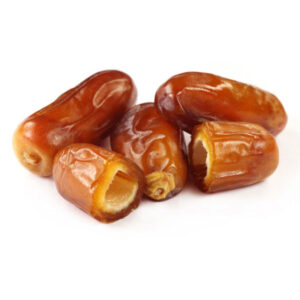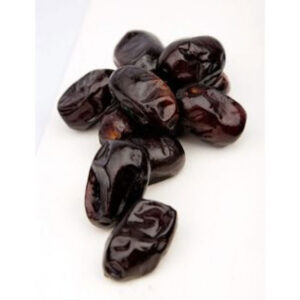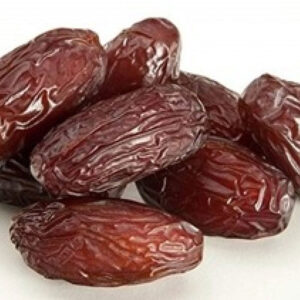Dates
Zahedi Dates
Zahedi Dates is one the dry varieties of the date in most regions of Iran, however, in some regions it is known as a semi-dried date. It is also called as Ghasab in some areas of Iran.
The date is produced in Khuzestan, Fars, Bushehr and Kermanshah provinces, but the main production is in a region called in Bushehr Province.
Packaging: 10 KG Telescopic Carton
Storage: In a cool, dry, clean and well ventilated place. Storage temperature is between 10-15 Celsius degrees, humidity below 50%
Sayer Dates
Phoenix Dactylifera is a palm in the genus Phoenix, cultivated for its edible sweet fruit grown and cultivated in southern regions of Iran. Furthermore its place of origin is unknown because of long cultivation; it probably originated from lands around Middle East and Persian Gulf.
The date palm grows to a ripe old age and apart from pollination in the spring needs very little care save watering through irrigation systems. This abundantly available fruit is revered for its ample health and dietary advantages. It can be used in variety types of food industrial.
Type of Sayer Dates:
Select Grade A maximum 75 pieces/lb.
Select Grade B maximum 85 pieces/lb.
GAQ maximum 115 pieces/lb.
FAQ (smaller sizes, no specific count/lb.)
Industrial without any count/Ib and in low quality for direct use of consumers
Packaging: 10 KG Telescopic Carton
Storage: In a cool, dry, clean and well ventilated place. Storage temperature is between 10-15 Celsius degrees, humidity below 50%
Rotab Mozafati Fresh Dates
Mozafati from Iran, where it is mainly grown in Kerman province, and often named "Bam date", after the city in that province. It is a dark, soft and sweet date of medium size. It is exceptionally well-suited for fresh consumption, because of its long shelf life. At a temperature of −5 degrees Celsius (23 °F) it can be kept for up to 2 years.
It accounts for 10% of total Iranian date crop. (100,000 tons [vague], of which 30% is exported).
Packaging: 8 KG Carton Contain 12/16 small boxes of Rotab Mazafati dates Storage: In a cool, dry, clean and well ventilated place. Storage temperature is between 0-4 Celsius degrees, humidity below 50%
Rabbi Dates
Rabbi Dates is kind of dates which are soft, dark brown in color and long in size. This date is semi-dried with moisture under %15. Shelf life is about one year at the room temperature under interim fumigation.
Packaging: 10 KG Telescopic Carton
Storage: In a cool, dry, clean and well ventilated place. Storage temperature is between 10-15 Celsius degrees, humidity below 50%
Piarom (Mariami) Dates
Piarum is one of the varieties which grows in south of Iran in the north area of Hormozgan. Palms are grown organically with no chemical treatment during the growing season. The washing stage is completely performed.
Fructose is the sugar found mainly in the date which undergoes metabolic processing in the liver and is known as one of the best sweeteners for diabetics to use.
This date is semi dried with moisture under %15. It is dark brown in color and round in size. Shelf life at room temperature is around 18 months, under interim fumigation. Harvest Time is around mid September. The date is available in Jumbo or normal forms.
Packaging: 10 KG Telescopic Carton
Storage: In a cool, dry, clean and well ventilated place. Storage temperature is between 10-15 Celsius degrees, humidity below 50%
Kabkab Dates
Kabkab Dates is round in size, and the color varies from light brown to dark brown. It is soft in nature with moisture under %18.
Shelf Life at room temperature is about 1 year under interim fumigation. The date is used in pitted or unpitted form. Harvest Time is Mid September. Kabkabs grow in Fars regions.
Packaging: 10 KG Telescopic Carton
Storage: In a cool, dry, clean and well ventilated place. Storage temperature is between 10-15 Celsius degrees, humidity below 50%
Dates
The fruit is known as a date. The fruit's English name (through Old French), as well as the Latin species name dactylifera, both come from the Greek word for "finger", dáktulos, because of the fruit's elongated shape. Dates are oval-cylindrical, 3–7 cm long, and 2–3 cm (0.79–1.18 in) diameter, and when ripe, range from bright red to bright yellow in color, depending on variety.
The date palm is dioeciously, having separate male and female plants. They can be easily grown from seed, but only 50 percent of seedlings will be female and hence fruit bearing, and dates from seedling plants are often smaller and of poorer quality. Most commercial plantations thus use cuttings of heavily cropping cultivars. Plants grown from cuttings will fruit 2–3 years earlier than seedling plants.
Dates provide a wide range of essential nutrients, and are a very good source of dietary potassium. The sugar content of ripe dates is about 80%; the remainder consists of protein, fiber, and trace elements including boron, cobalt, copper, fluorine, magnesium, manganese, selenium, and zinc.
Iran has more than 70 types of dates that grown in different region in Iran such as Mozafati, Piarum, Kabkab, Farakan, Zahedi, Sayer, Shakhuni, Shavhavi, Rabbi and etc.







